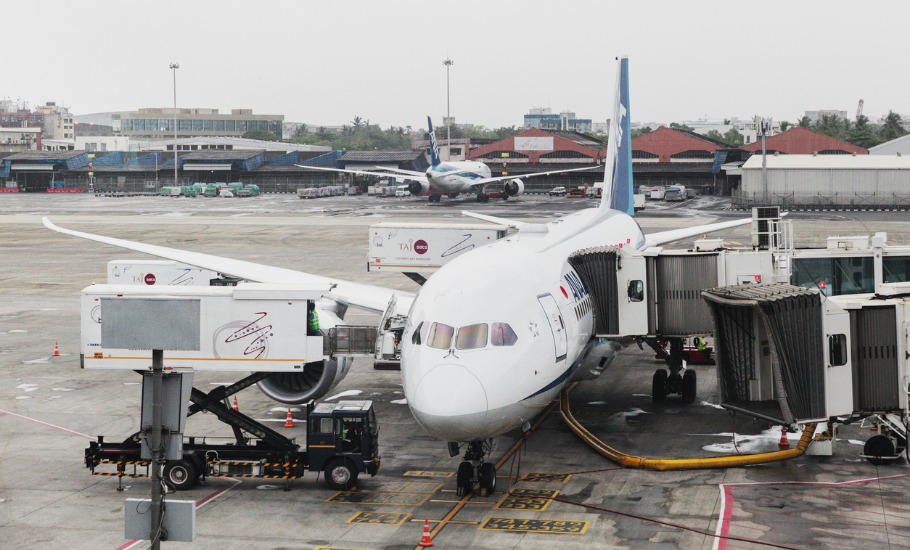
India’s airlines are under-capitalised; tough decisions are need of hour
Airlines are at the apex of the aviation and tourism value chain and fuel the entire aviation economy; under-capitalised airlines can have consequences that ripple through the ecosystem

Indian aviation continues to see strong demand. Travellers are out and about and are taking to the skies. Most recently, the per day passenger count breached the 4-lakh mark, which was welcomed by many quarters.
Even so, the celebrations are one-sided. At the other side of the coin is the stark reality of cash running short and permanent destruction of capital. And a core part of the challenge is capitalisation, or lack thereof.
Also read: India to add 80 more airports in 4-5 years: Civil Aviation Ministry
For the aviation industry to prosper, the country must have a strong airline base. Fewer airlines are fine as long as they are strong airlines. That, in turn, means well capitalised airlines. In looking to other countries where aviation has been a key driver of economic growth, this point is usually missed.
Where is private capital?
Capitalisation is also important because airline failures tend to cascade across the system. Speak to any banker in India and a mention of Kingfisher and Jet Airways is sure to find its way into the conversation. This impacts other decisions, including the overall risk premiums across the sector, the cost of capital and investor interest in the sector. Indeed, for a sector touted to have so much potential, private capital has been found wanting.
In this context, it is interesting to note the recent announcement by the government regarding the enhancement of the Emergency Credit Line Guarantee Scheme (ECLGS) for airlines. Specifically, airlines are now able to borrow funds up to 100 per cent of their loan outstanding. The cap on this borrowing is at ₹1,000 crore and can further go up to ₹1,500 crore in case of equity infusion by promoters. These funds, in turn, are guaranteed by the NCGTC (National Credit Guarantee Trustee Company) with payment terms over six years. It is a welcome relief for some airlines who had seen credit lines fast disappearing.
However, the emergency credit may actually worsen the capitalisation challenge for the industry. This is because while the scheme provides much-needed liquidity support, most of the funds will be used towards continuing operations. Under-capitalisation and weak balance sheets that led to this situation of minimal liquidity stand unaddressed.
On the horizon loom the macro challenges with few mitigating measures. The rupee continues to depreciate; ATF (aviation turbine fuel) pricing and taxation challenges remain; with increasing central bank action, the cost of funds is going up; inflation is rearing its head; and, price continues to be the key determinant of demand.
Adding to the woes
In a scenario where equity was required, the ECLGS does just the opposite — it adds debt to the airlines. Debt to already over-leveraged balance sheets. While there is a provision that has been made where equity from owners can lead to an increased limit on the borrowings, this remains ambiguous for now. Without equity or recapitalisation that lower the debt profile, capital providers are just not interested due to the nature of the returns that are provided.
Airlines are at the apex of the aviation and tourism value chain and fuel the entire aviation economy. Under-capitalised airlines pose a challenge as they have consequences that ripple through the ecosystem. These airlines manage cash-flow, often discounting to irrational levels, hoping to make up the losses as they scale.
Add to it a credit crunch, and this, in turn, means a significant impact to the aviation economy. In the long run, lending to an under-capitalised airline leads to capital loss, employment loss and limited recapitalisation – if at all.
Let market determine outcome
When distressed airlines are kept afloat, the industry suffers from diluted pricing power, reduced capacity utilisation and distortion in borrowing rates. Weak balance sheets, that are partly responsible for this fragile situation, become weaker. The cycle feeds on itself.
Regulation is one way around it but the other way is to let market forces determine outcomes. Of course, this does not make for good PR or politics since an airline failure is sure to make the headlines and stories of the failure continue to linger. Yet, at the same time, under-capitalised airlines pose a challenge to the industry as a whole.
Also read: Airlines in India go on hiring spree as business picks up post-COVID
The capitalisation challenge requires tough decisions. But it is imperative to be addressed head on as it is critical for India’s airlines and for Indian aviation and for India as a whole. Till now, three airlines continue to have significantly curtailed capacity, losses continue to mount, and capitalisation levels for the industry as a whole remain inadequate. It is a challenge that has to be addressed one way or the other.
(The writer is Managing Partner with aviation advisory firm AT-TV)


